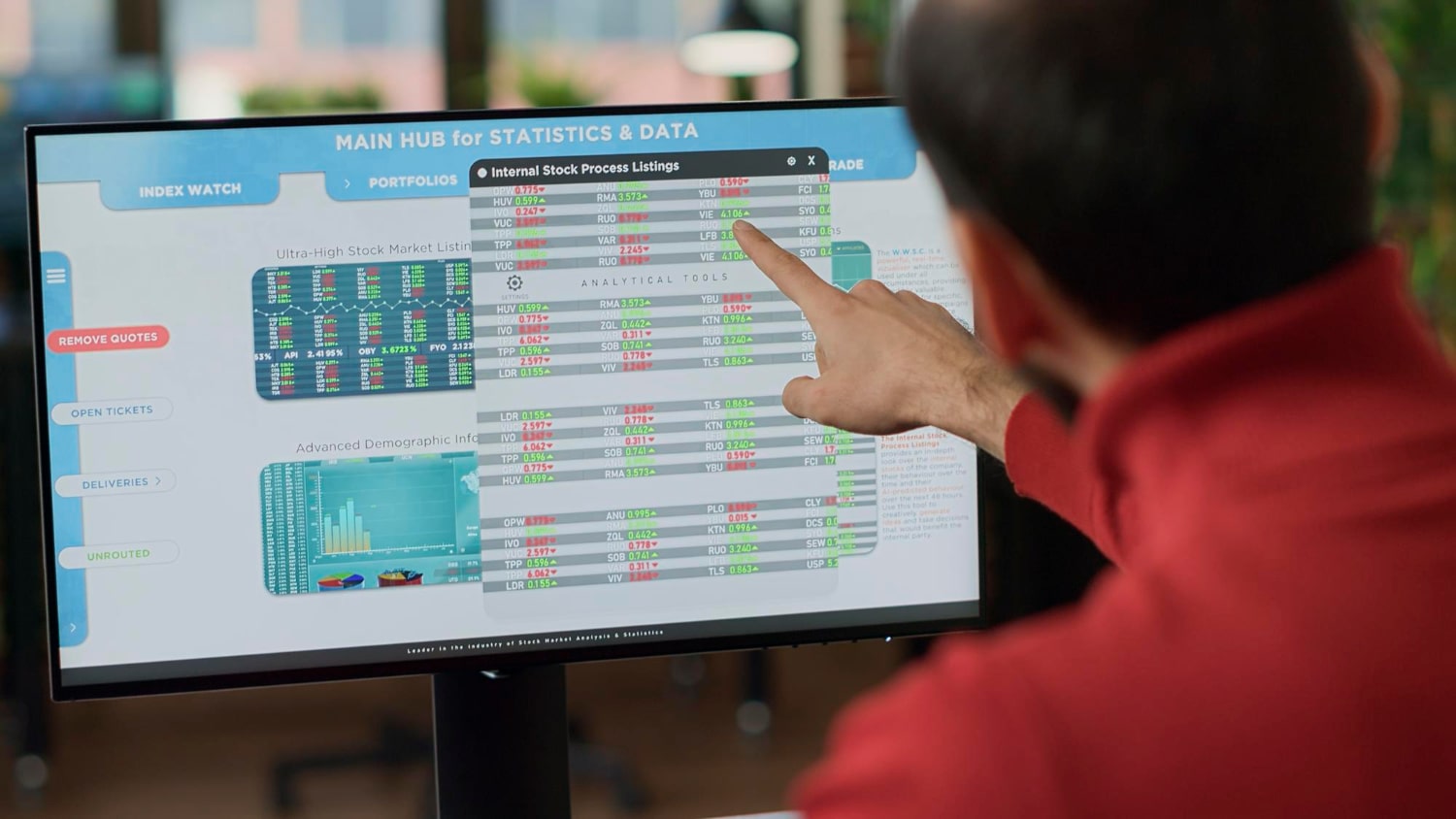The business of beer brewing is not always as fun as the brewing process itself. And perhaps the least fun part of that business side is compliance—more specifically, compliance through regular reporting like the Brewer’s Report of Operations (BROP).
You’re likely familiar with the monthly or quarterly process of submitting the report, a core requirement for U.S. breweries by the Alcohol and Tobacco Tax and Trade Bureau (TTB). Fail to submit it, and you risk hefty fines for your brewery or—at worst—losing the federal right to operate your brewery.
But that doesn’t make it less stressful. For each compliance report, including the Brewer’s Report of Operations, you’ll need to submit regular information about your business processes and records, inventory, and more. Pulling that information regularly, especially if you don’t have standardized processes in place, can take significant time and resources that could otherwise be spent brewing better beer and growing your business.
Fortunately, breweries across the spectrums are beginning to find ways to simplify the process. They leverage modern software and more standardized workflows to track everything they need for accurate compliance reports. With the right processes and platforms in place, you can simplify the reporting process and increase your business efficiencies.
Just the Basics: The Brewer’s Report of Operations
Before digging into the details of more efficient compliance reporting, let’s recap the nuances of a report like the Brewer’s Report of Operations. Put simply, it’s the document—submitted monthly or quarterly, depending on your taxable revenue—that lets the TTB know you are operating smoothly and within the laws.
The focus of the report is on inventory, helping the TTB understand how your produced beer translates into sales and inventory transfers at the end of each reporting period. When the numbers are off, the TTB might start to suspect odd reasons for the inventory discrepancy that might suggest you are no longer in compliance with its laws and regulations.
Related: What You Need to Know About the Brewer’s Report of Operations
And that is where the issue lies. To avoid suspicion by the TTB and similar authorities on the state level, you have to report your inventory and other business operations accurately. That, in turn, means spending significant time on getting it right.
Even accidental mistakes can lead to issues that will require even more time to resolve or rectify. Simplifying the process while improving the accuracy of the reporting becomes essential to successful brewery or brewpub operations.
Creating a Single Reliable Source for All Relevant Business Information
Simplifying reporting like the Brewer’s Report of Operations, in turn, requires one thing above all: a single source of truth that contains all of your relevant business operations. All data for each report should come from that same source, ensuring consistency each time the information is pulled to minimize discrepancies.
Of course, that process requires more of an adjustment than might be obvious. Always pulling information from the same source also means that the information flowing into that source has to be accurate and consistent. For example, you’ll need to make sure that your inventory and cost accounting happens consistently and in the same source every time, instead of working through spreadsheets to get the information.
Take the BROP as an example. The TTB requires largely inventory-related information, including:
- Beer produced from fermentation
- Beer received from racking and bottling
- Beer received from cellars
- Beer returned to brewery after removal from brewery
- Beer transferred from another brewery under the same ownership
- Removals from inventory for export, supply, or R&D purposes
- Beer consumed on premise
- Beer destroyed at brewery
- Inventory losses, including theft
- And more
Imagine the difficulty of pulling all of that information from different, sometimes unreliable sources like spreadsheets, whiteboards, and paper records. Software that can act as the single source of truth for all information needed for your reporting can make a significant difference.
Tracking Inventory and Sales Within Your Digital System
The inventory piece of the equation especially is worth digging into more. So are the sales within your brewery, which you’ll need to report to both your home state and federal authorities for tax purposes. Here, too, breweries of all sizes are simplifying their compliance needs by automating and streamlining the process.
For businesses as complex as breweries, tracking inventory is not always straightforward. You’ll need to keep track of raw ingredients needed for your batches, racking and bottling supplies, kegs, cans, labels, and more. Brewed bottles, kegs, and cans will also need to be accounted for and, like many raw ingredients, you’ll need to track expiration dates for consistent quality control.
Related: How to Manage a Brewery With Business Technology
With the right inventory management system, you can streamline the process. You’ll know when you run low to streamline ordering and storage. You can also better manage your brew batches to avoid spoiling goods. And, of course, by keeping track of it all in a single system, you can easily pull the data for compliance purposes.
The same is true for your sales, as well. By keeping your accounting processes consistent, you can more easily track both brewery costs and revenues and report on them to tax authorities. Instead of manual calculations, it becomes easier to know exactly where your financials stand—and report those financials on a regular basis.
Leveraging Real-Time Compliance Alerts for Faster Adjustments
Technically speaking, compliance depends on the reports a brewery submits at the end of a given period. But of course, the meat of the issue is what happens between those reporting deadlines—those numbers that actually go into the final report. This is where inventory will fluctuate, beer will expire and need to be destroyed, and sales figures may begin to rise or fall.
Finding these errors at the end of a reporting period means having to go back and attempt to reconcile the information. At best, you can spend hours trying to find errors or rectifying inconsistencies. At worst, there will no longer be a way to do just that, leaving you with inconsistencies you can no longer explain.
Now, imagine the alternative—a system that provides real-time alerts when inconsistencies might be flagged through compliance reports. Within that system, you can receive a notification when something is amiss in your inventory or sales data, enabling you to dig into the issue right away and before it either snowballs or becomes difficult to understand.
These real-time alerts allow you to make adjustments more quickly to ensure you remain within compliance. But even independent of helping with the necessary reporting, they also help to improve basic business efficiency, which remains a major challenge for most craft breweries.
Automating Your Reporting for More Efficient Compliance Reporting
Finally, brewery management software can also help to automate the reporting needed for compliance itself. In addition to streamlining the data that flows into the report, the right system automatically pulls that data into the right reporting structure through automated brewery report generation functionality.
Compliance reports, after all, are standardized by definition. They require the same information for each reporting period. That makes it easy to create templates into which the data can flow, which in turn allows the software to automate the reporting with the same information, every time.
Building automated reports also has two additional benefits for brewers looking to improve their efficiencies:
- The reports can be used for more than just compliance, creating a deeper look and visibility into your business operations, inventory, and sales.
- Brewers can custom-build other reports, enabling them to automate more custom reports alongside the BROP and other standard compliance needs like excise tax reports.
The result is a more streamlined reporting process that simplifies compliance and saves valuable time while at the same time improving the accuracy of the data.
Discover Software That Simplifies Compliance Reporting and the Brewer’s Report of Operations
Through techniques and systems like the above, breweries and brewpubs of all sizes are able to simplify the Brewer’s Report of Operations and other compliance reports. Building a single source of truth, improving inventory and sales tracking, leveraging compliance reports, and automating the reporting process all help to improve efficiencies and accuracy.
Of course, you still have to find the right software to help build this type of process. That software cannot just be an industry-agnostic SAP solution, but has to be customized to the brewery industry. It should also be comprehensive enough, and integrate with enough other sources, to create a single source of truth for all of your brewery’s operations.
That’s where Ekos comes in. Trusted by brewers in six continents, we’re the leading business management software powering the craft beverage industry. That means not just streamlining all of your operations data into the software, but also standardizing and automating compliance reports like the Brewer’s Report of Operations. Learn more about our solution and how it can improve your brewery by booking a demo today.



